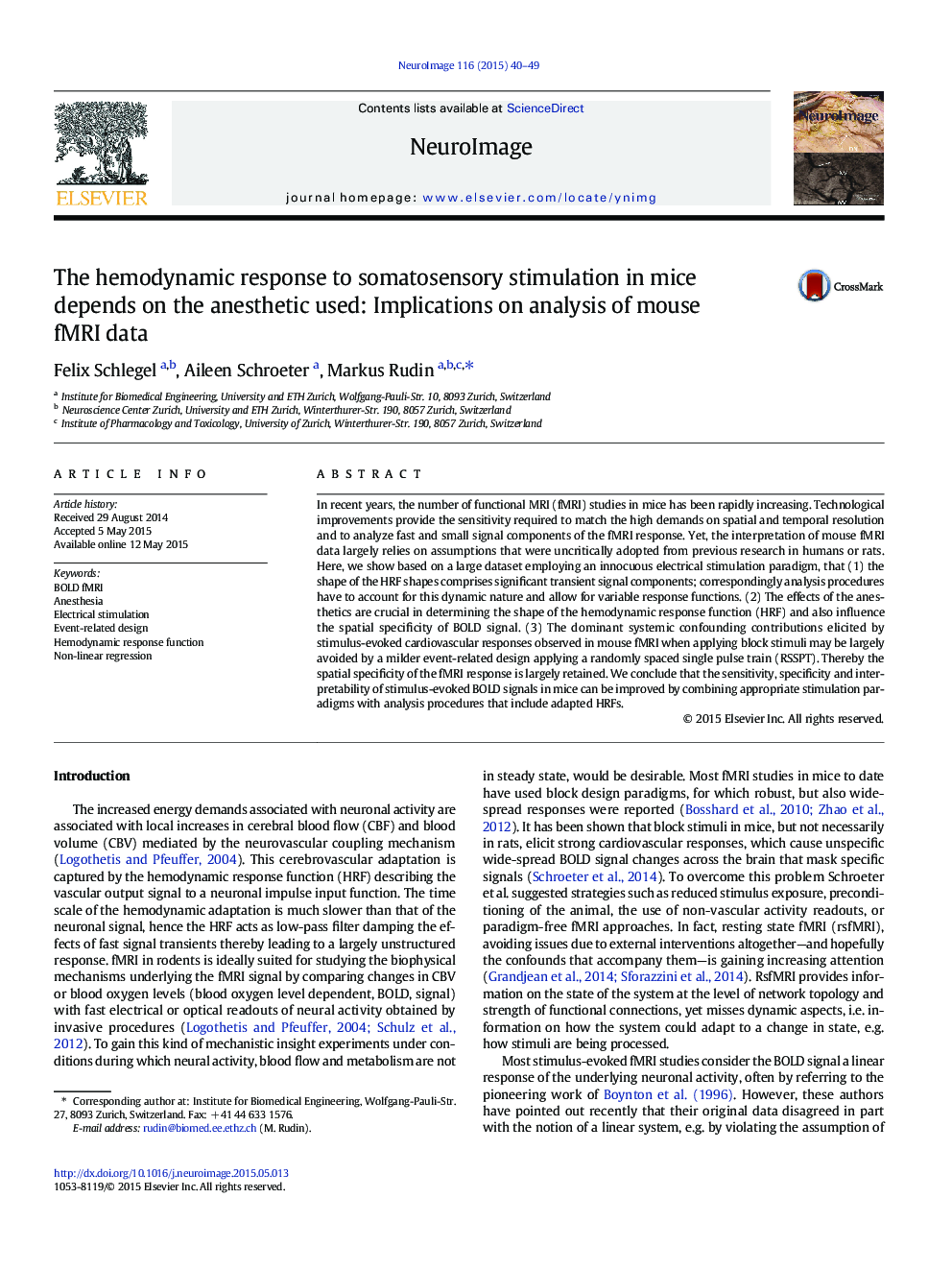| Article ID | Journal | Published Year | Pages | File Type |
|---|---|---|---|---|
| 6024878 | NeuroImage | 2015 | 10 Pages |
Abstract
In recent years, the number of functional MRI (fMRI) studies in mice has been rapidly increasing. Technological improvements provide the sensitivity required to match the high demands on spatial and temporal resolution and to analyze fast and small signal components of the fMRI response. Yet, the interpretation of mouse fMRI data largely relies on assumptions that were uncritically adopted from previous research in humans or rats. Here, we show based on a large dataset employing an innocuous electrical stimulation paradigm, that (1) the shape of the HRF shapes comprises significant transient signal components; correspondingly analysis procedures have to account for this dynamic nature and allow for variable response functions. (2) The effects of the anesthetics are crucial in determining the shape of the hemodynamic response function (HRF) and also influence the spatial specificity of BOLD signal. (3) The dominant systemic confounding contributions elicited by stimulus-evoked cardiovascular responses observed in mouse fMRI when applying block stimuli may be largely avoided by a milder event-related design applying a randomly spaced single pulse train (RSSPT). Thereby the spatial specificity of the fMRI response is largely retained. We conclude that the sensitivity, specificity and interpretability of stimulus-evoked BOLD signals in mice can be improved by combining appropriate stimulation paradigms with analysis procedures that include adapted HRFs.
Keywords
Related Topics
Life Sciences
Neuroscience
Cognitive Neuroscience
Authors
Felix Schlegel, Aileen Schroeter, Markus Rudin,
